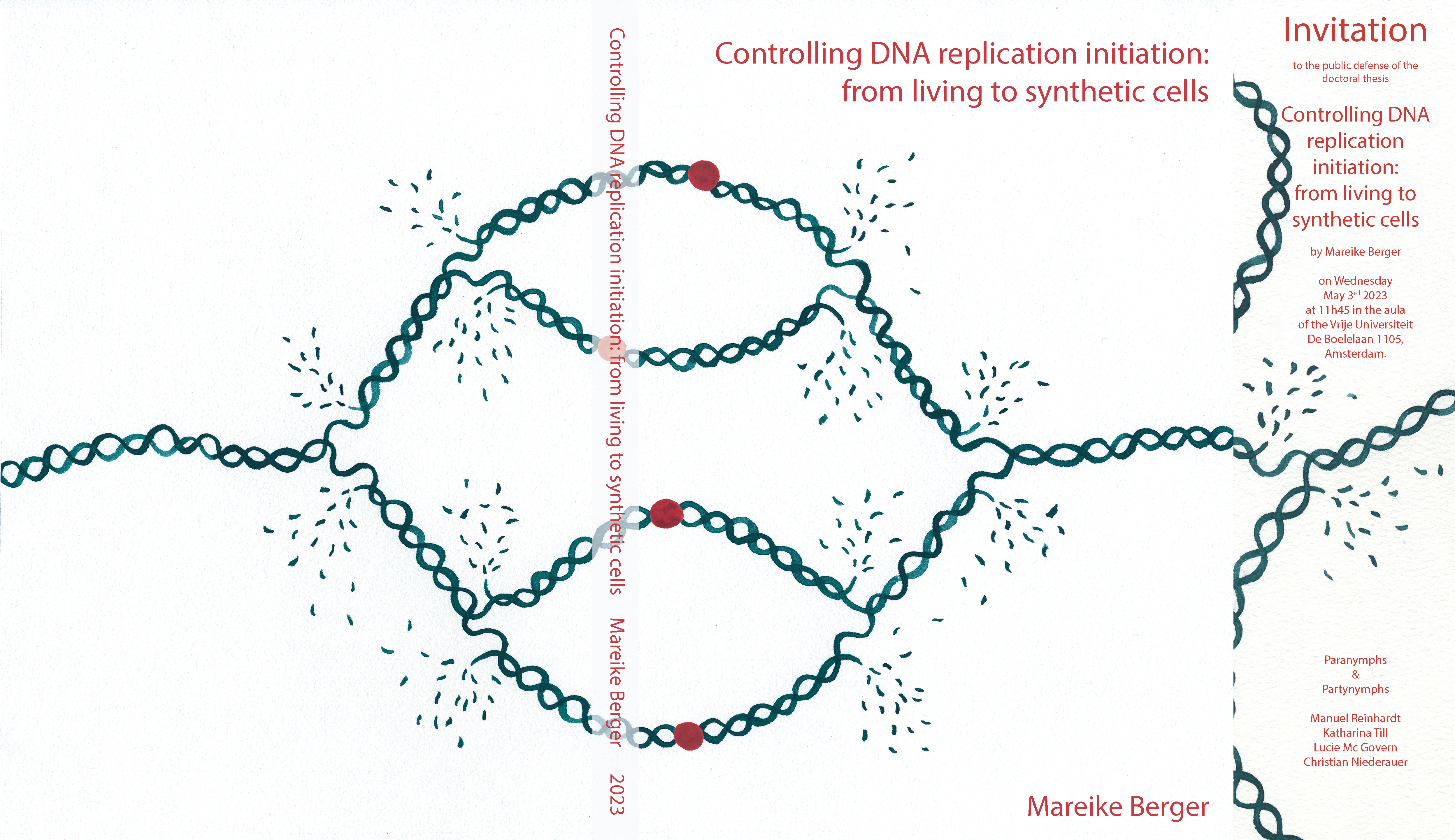Controlling DNA replication initiation: from living to synthetic cells
The bacterium Escherichia coli initiates replication once per cell cycle at a precise volume per origin and adds an on average constant volume between successive initiation events, independent of the initiation size. Yet, a molecular model that can explain these observations has been lacking. Experiments indicate that E. coli controls replication initiation via titration and activation of the initiator protein DnaA. In chapters 2, 3 and 4, we study by mathematical modelling how these two mechanisms interact to generate robust replication-initiation cycles. We first show that a mechanism solely based on titration generates stable replication cycles at low growth rates, but inevitably causes premature reinitiation events at higher growth rates. In this regime, the DnaA activation switch becomes essential for stable replication initiation. Conversely, while the activation switch alone yields robust rhythms at high growth rates, titration can strongly enhance the stability of the switch at low growth rates. Our analysis thus predicts that both mechanisms together drive robust replication cycles at all growth rates. In addition, it reveals how an origin-density sensor yields adder correlations. Initiating replication synchronously at multiple origins of replication allows the bacterium E. coli to divide even faster than the time it takes to replicate the entire chromosome in nutrient rich environments. What mechanisms give rise to synchronous replication initiation remains however poorly understood. In chapter 5, we identify four distinct synchronization regimes depending on two quantities: the duration of the so-called licensing period during which the initiation potential in the cell remains high after the first origin has fired and the duration of the blocking period during which already initiated origins remain blocked. For synchronous replication initiation, the licensing period must be long enough such that all origins can be initiated, but shorter than the blocking period to prevent reinitiation of origins that have already fired. We find an analytical expression for the degree of synchrony as a function of the duration of the licensing period, which we confirm by simulations. Our model reveals that the delay between the firing of the first and the last origin scales with the coefficient of variation (CV) of the initiation volume. Matching these to the values measured experimentally shows that the firing rate must rise with the cell volume with an effective Hill coefficient that is at least 20; the probability that all origins fire before the blocking period is over is then at least 94%. Our analysis thus reveals that the low CV of the initiation volume is a consequence of synchronous replication initiation. Finally, we show that the previously presented molecular model for the regulation of replication initiation in E. coli can give rise to synchronous replication initiation for biologically realistic parameters. Recent developments in synthetic biology may bring the bottom-up generation of a synthetic cell within reach. A key feature of a living synthetic cell is a functional cell cycle, in which DNA replication and segregation as well as cell growth and division are well integrated. In chapter 6, we describe different approaches to recreate these processes in a synthetic cell, based on natural systems and/or synthetic alternatives. Although some individual machineries have recently been established, their integration and control in a synthetic cell cycle remain to be addressed. In this chapter, we discuss potential paths towards an integrated synthetic cell cycle.



